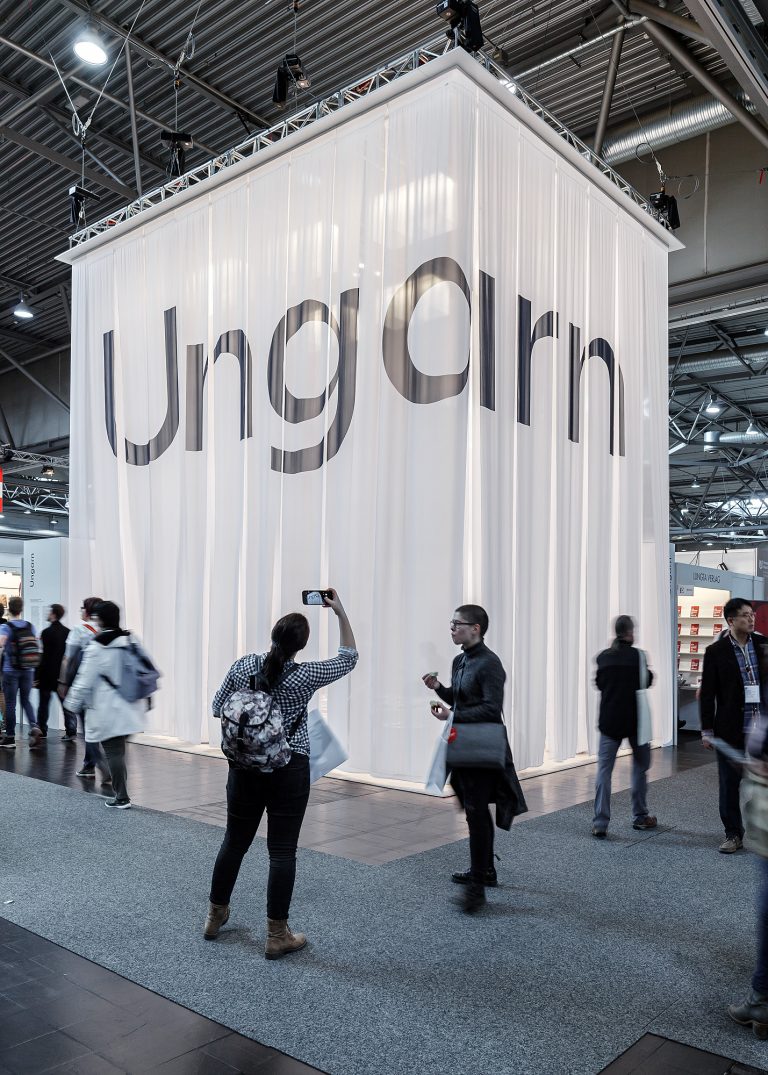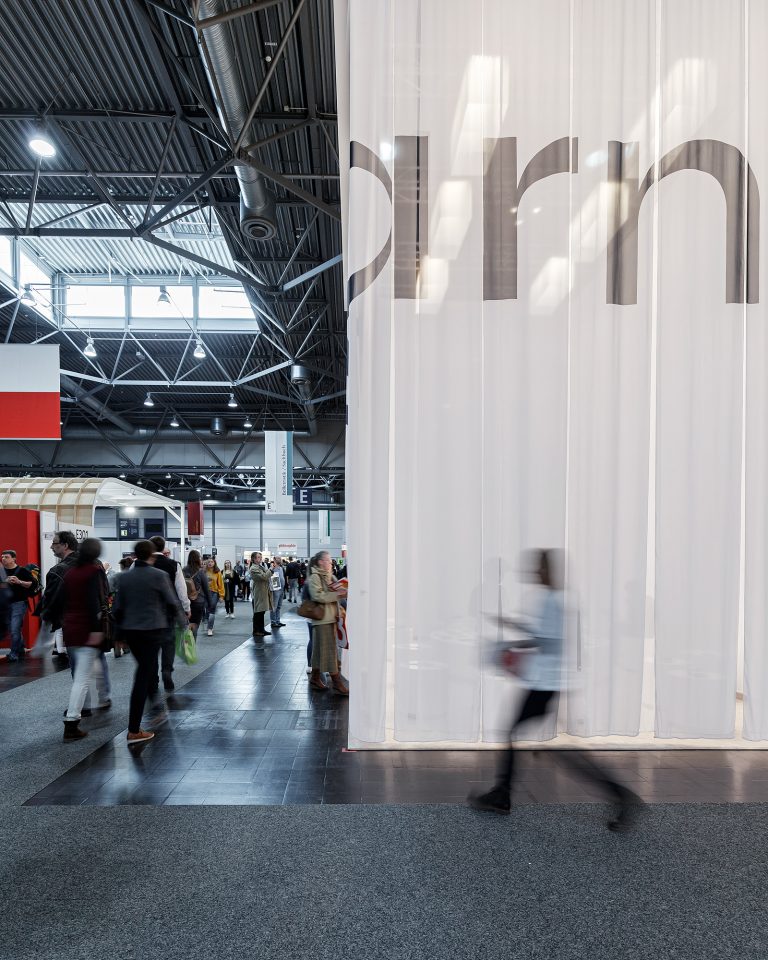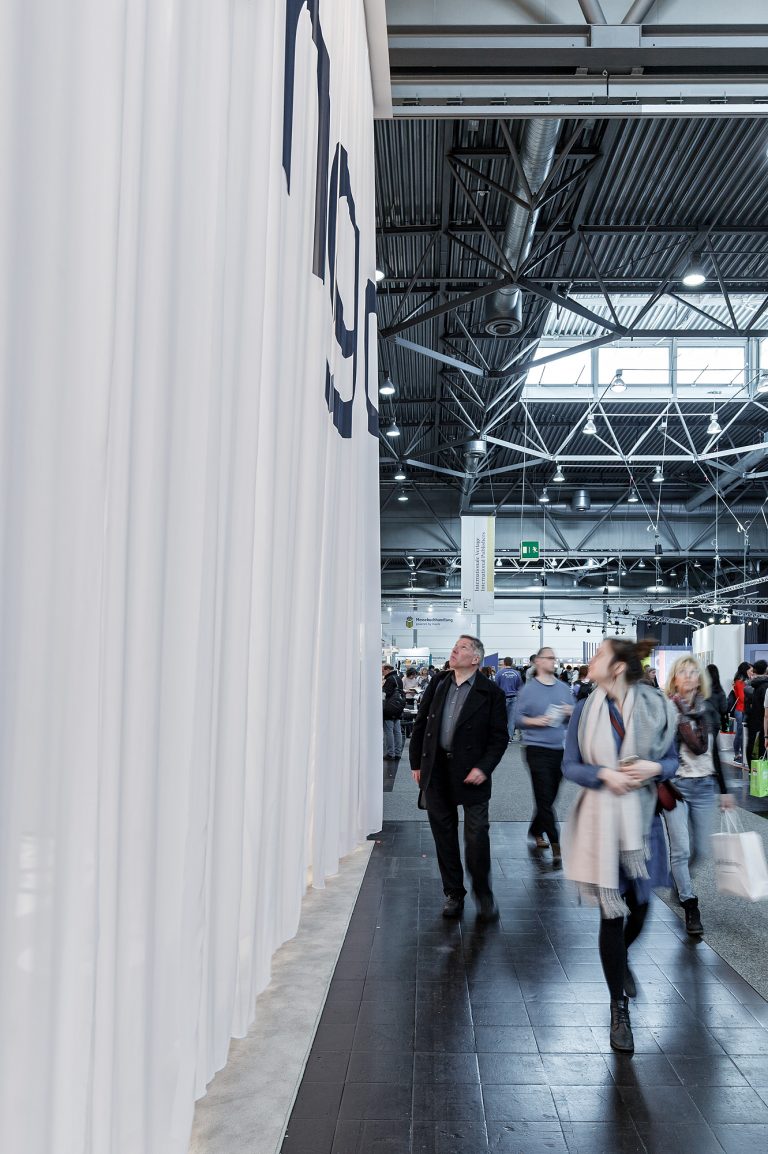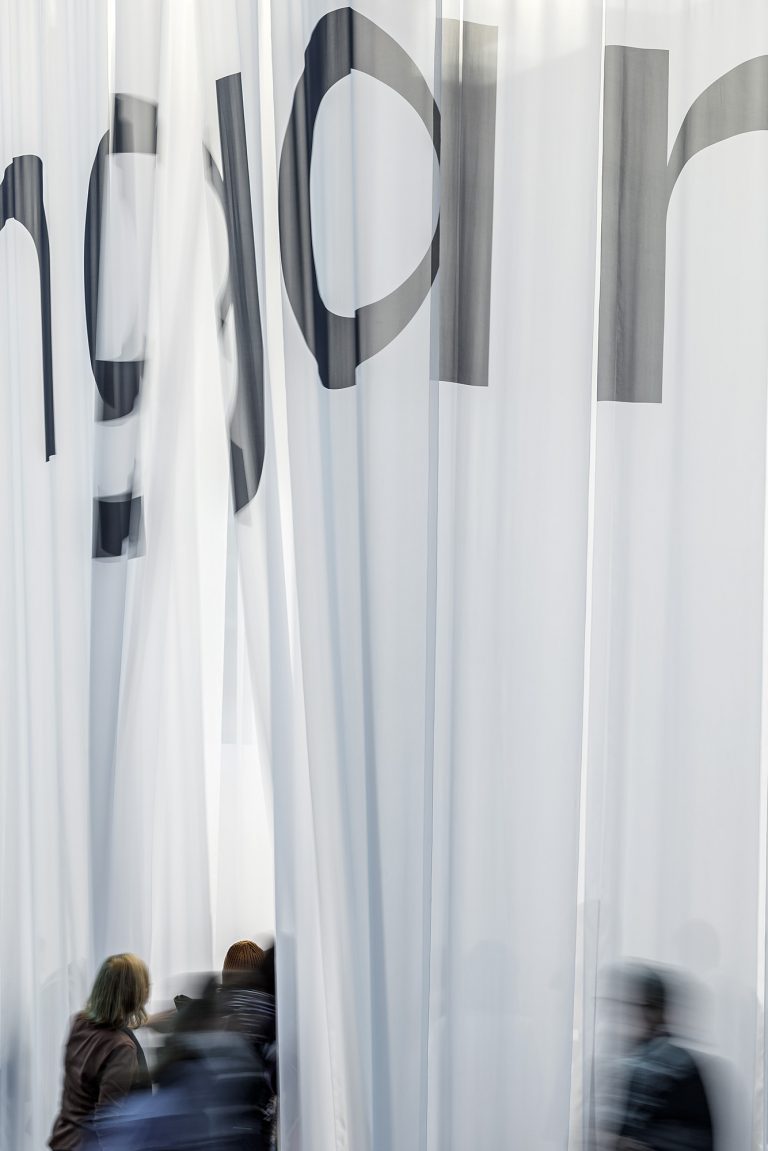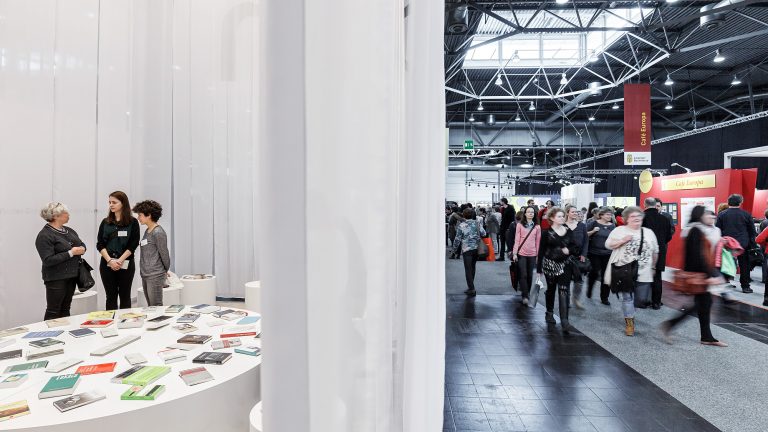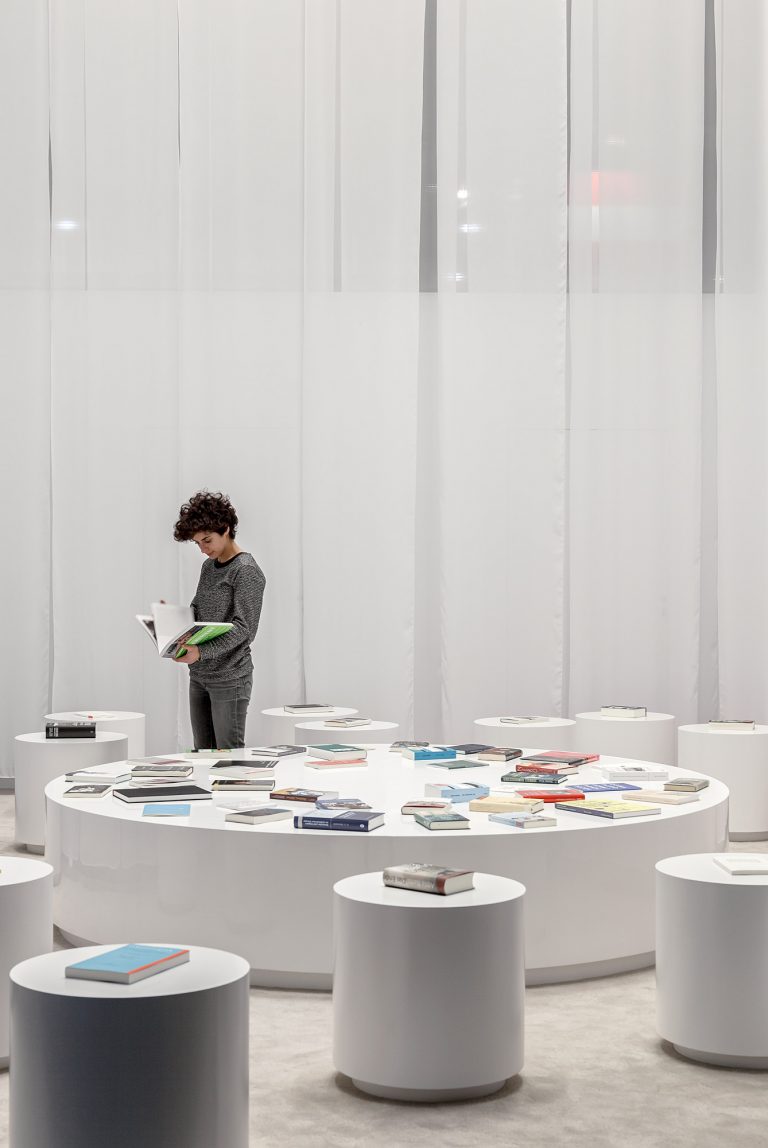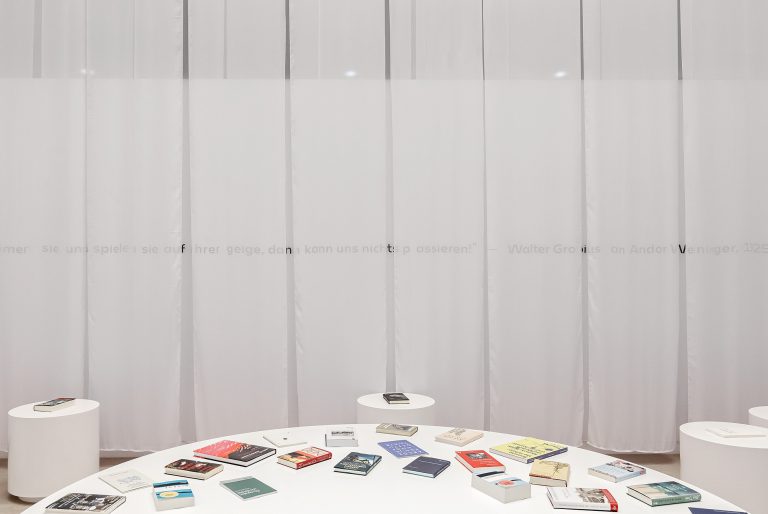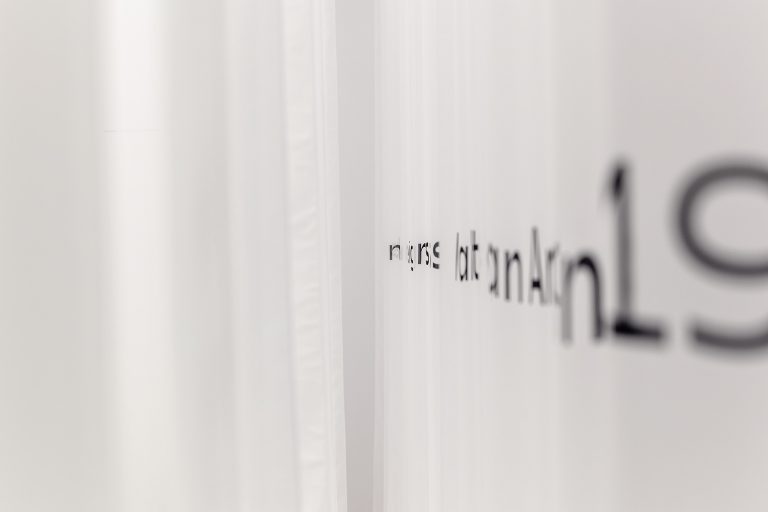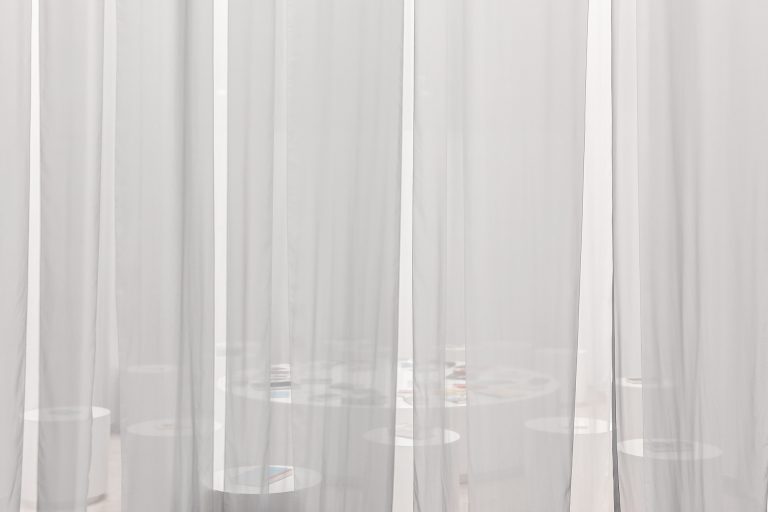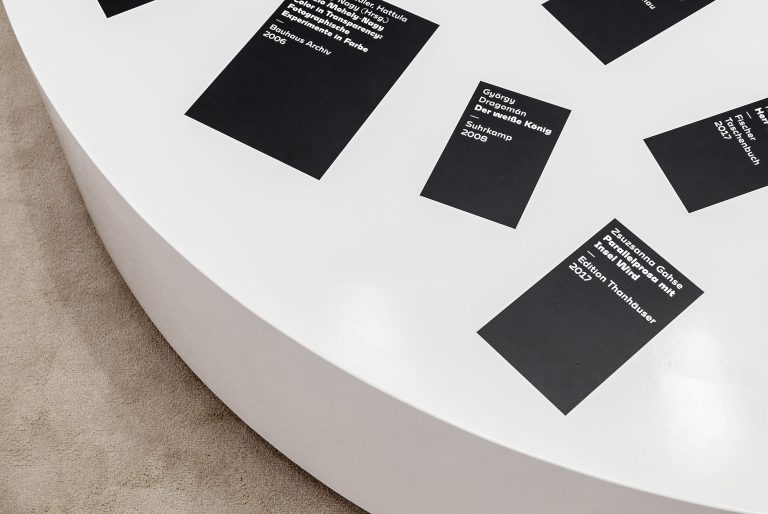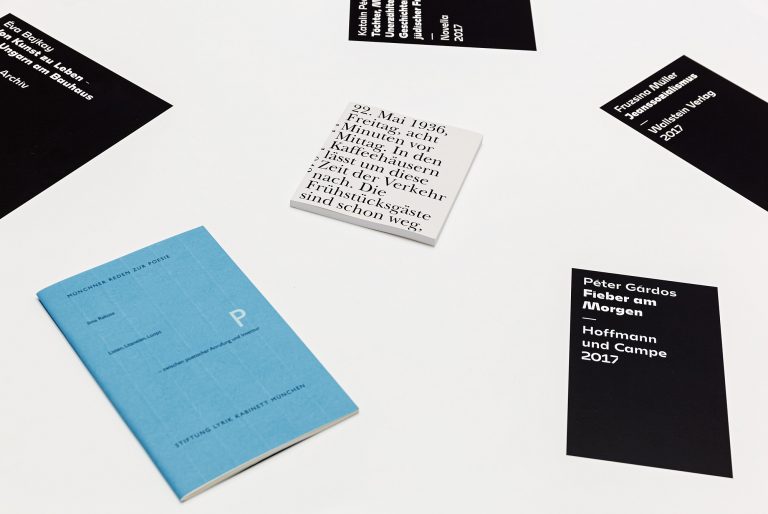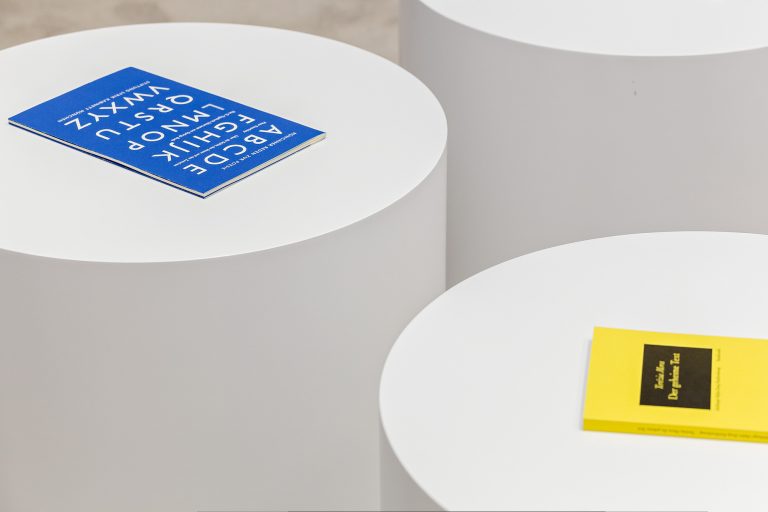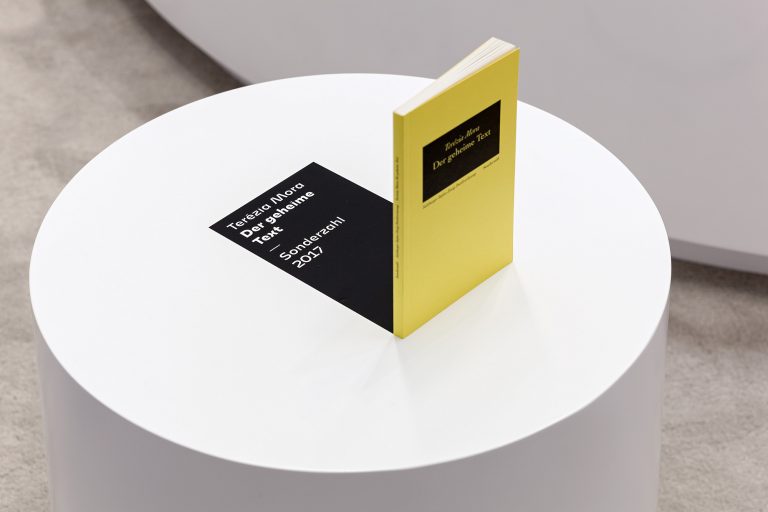Leipzig Book Fair
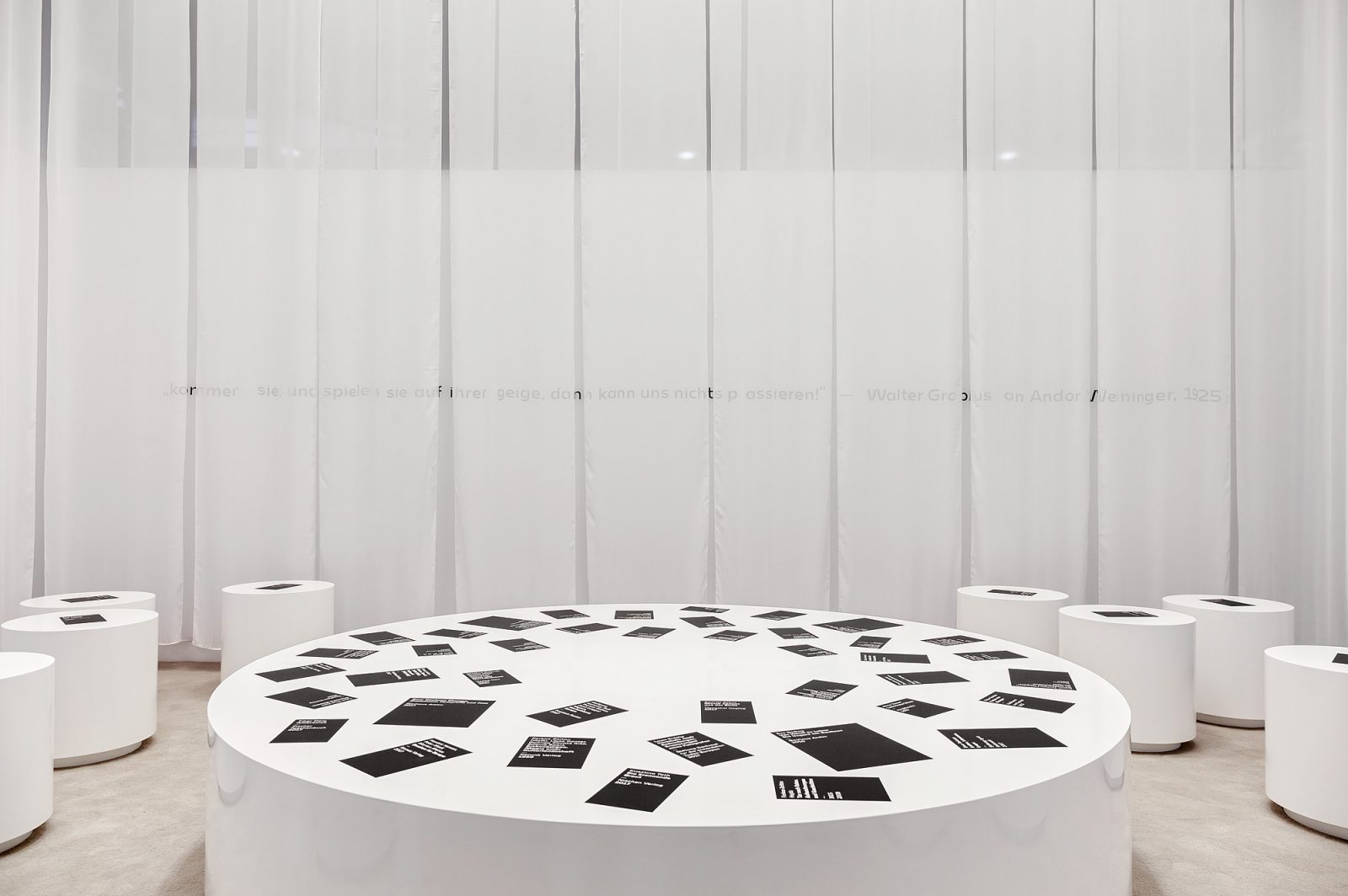
2018
Leipzig Book Fair - The Hungarian Pavilion
Client: Ministry of Foreign Affairs and Trade, Balassi Institute, Publishing Hungary Program
Project management: Collegium Hungaricum Berlin
Design and execution: Hetedik Műterem Kft.
Concept: Levente Szabó, Balázs Biri, Ákos Polgárdi
Co-designer: Anna Breuer
Lighting: András Jánosi (LumoConcept)
Lighting concept: Ferenc Haász
Graphic design: Ákos Polgárdi (SUBMACHINE)
Consultant: Emese Benczúr
Typeface: Mohol, Ádám Katyi
Supporter: Hungarian Design Council
Contractor: TorTer e-Design Kft.
Photography: Balázs Danyi
„Come and play us your violin, then nothing bad can happen to us!”
– Letter by Walter Gropius to Andor Weininger, 1925
The conceptual basis for this year’s Hungarian pavilion of the Leipzig Book Fair was defined by the approaching centenary of the Bauhaus. We wanted to conjure up the 99th anniversary in the pavilion not so much by direct formal references, but rather in a more indirect manner while retaining the primary focus for visitors and the books on display. We applied the characteristically Bauhaus approach of the Gesamtkunstwerk, and defined a reading space with a unique character and strong atmosphere, in the overwhelmingly standardised and commercial context of the fair. In essence, we recommended the opposite of what is characteristic of usual trade fair situations. Apart from obvious connections to contemporary architecture, the inner spatial atmosphere was also inspired by examples directly connected to the Bauhaus, displaying the use of uncluttered, fluid spaces defined by textiles: a great example being Café Samt und Seide designed by Ludwig Mies van der Rohe and Lilly Reich, and built in 1927 in Berlin, serving as an exhibition pavilion for the German silk industry. The uniqueness, lightness, constant movement, transparency and flexibility of the material used in this plan by Mies, who later served as director of the Bauhaus from 1930-1933, strengthens his paradigm-shifting theory of fluid spaces, which we tried to invoke in the exhibition space in Leipzig. The presence and mutual interference of several art forms was as much a characteristic of the Bauhaus, as its elevating and intensive connection and interaction with the Hungarian art scene. The latter is emphasised by the quote from Walter Gropius, the motto of our design. In a heartfelt letter from 1925, the Bauhaus-founder urges one of the defining figures of the Hungarian Bauhaus to return to Dessau and participate in the art life of the school. The closing sentece of this letter, used as our motto and displayed on a curtain inside the space of the pavilion, symbolises the strong, symbiotic relationship between the international mainstream of the Bauhaus and its Hungarian adherents.





